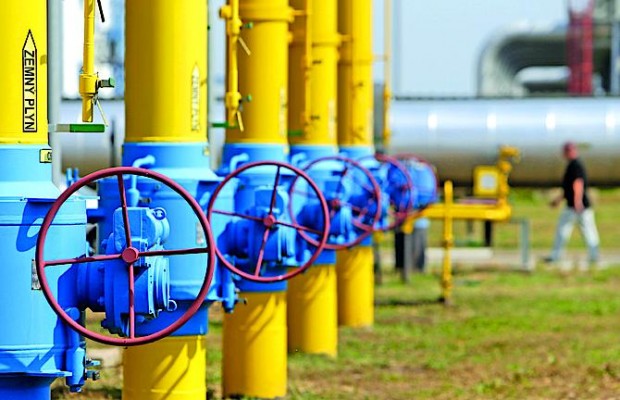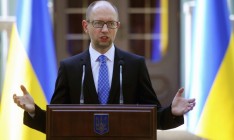Business
conflictRussia forces Europe to cut gas supplies to Ukraine

By hook or by crook, Russian authorities are trying to force Ukrainian government to acknowledge the gas debt and the new terms of gas pricing. On the eve of the new round of gas talks, Russian Prime Minister Dmitry Medvedev said that this round would begin only after Ukraine paid for the received gas at the price of US $385 per 1,000 cubic m. After the Ukrainian side did not respond to such a statement, Gazprom got down to business. It decided to act without any statements or declarations and simply limited gas supplies to several European countries, mainly those from which Ukraine buys the same Russian gas.
The first to suffer
The first wake-up call on curtailment of the supply of Russian gas to Europe came on Tuesday – Gaz System, the operator of the Polish gas transport system (GTS), announced that as of Monday Gazprom has ceased to fulfill its orders for the supply of gas in full. In particular, on September 8 Gazprom did not supply to Poland 20% of the declared amount of gas and on September 9 the situation became even worse – Gazprom cut gas supplies by 24% of the claimed amount. The next day Gaz System was forced to inform Naftogaz of Ukraine that it will temporarily – starting 9:00 am on September 12 – stop reverse gas supplies from Poland to Ukraine via the Germanovichi point.
The Polish oil and gas company PGNiG registered a decline in the supplies of Russian gas in Drozdovychi (Ukraine) and Kondratki and Vysokaye (both in Belarus). “The company is trying to find out the reasons for reduction of supply, in particular, whether they are of a technical or commercial nature,” says the statement from PGNiG. Meanwhile, PGNiG has covered the deficit of gas supplies from other sources.
However, based on the results of September 10 the situation has become even more alarming – the lack of gas supplies to Poland reached 45%. PGNiG stated that according to the contract it may choose gas in the volume equal to or lower than the maximum daily amount provided for by the contract. “The volumes of gas ordered by PGNiG were consistent with the provisions of the contract. Nevertheless, they were not met by Gazprom Export LLC,” says the Polish company.
To cover the deficit of Russian gas, PGNiG was forced to resort to alternative supplies again. This time, besides the points of connection to the German GTS in Lasow (Germany) and Cieszyn (Czech Republic), Poland was pumping gas through Mallnow (Germany).
PGNiG has calmed its Polish consumers saying there is no need to withdraw gas from the underground storage facilities, which are fully filled and contain 2.6 bn cubic m of gas. However, the Polish supplier found neither words of comfort, nor any extra gas for the Ukrainian consumers.
All-out offensive
After Poland, Gazprom started tightening the valve for other European gas buyers: on September 9 and 10 it decreased the volumes of gas supplies to Slovakia. This was confirmed by the press secretary of the Slovak company Slovensky Plynarensky Priemysel (SPP) Petro Bednar. “We officially confirm that our company registered a decline in the supply of gas by 10%,” he said, stressing that this refers to reduction of the amount of supplies for SPP, but not for all Slovak companies.
Germany also felt the restriction of supplies: representatives of the E.ON Concern reported that the company had received a few percent less gas than usual. “This is not uncommon, and, as practice shows, of temporary nature,” said a representative of E.ON.
Friendship requires sacrifice
Having faced the shortage of gas supplies, the Polish PGNiG has created a crisis headquarters, which will analyze data on supply of gas and work on its strategy for the future. First of all, the Polish company demanded that Gazprom explained its actions, but has not received any explanations, which was rather confusing.
In the media Gazprom at first acknowledged the reduction of supplies, referring to the need to pump gas into its own underground storage facilities. But on Thursday the Russian monopoly said there was no gas curtailment. “Gas is being exported to Poland without any changes in the exact same volumes as in the past – 23 mn cubic m of gas per day,” said the official representative of Gazprom Sergei Kupriyanov. He did not recognize restriction of gas supply to its Slovak partner either: “In September, the amount of supplies of Russian gas to the Slovak company SPP remained at the level of 12 mn cubic m daily”.
Denying the fact of curtailment, the Russian side, to say the least, contradicts the facts and the reason for limitation of supplies to Poland lies on the surface. Chairman of the Board of Directors of Ukrtransgaz Ihor Prokopiv explained that on September 10 Poland (PGNiG – Capital) filed an application to Gazprom for import of 11 mn cubic m of gas, while Gazprom supplied only 7 mn cubic m and did not supply exactly the amount which Ukraine receives from Poland in reverse supplies. “Minus 4 mn cubic m – this is our reverse supply,” he said.
A partner at the RusEnergy Consulting Agency Mikhail Krutikhin in a conversation with Capital noted that such restriction of supplies may well be the pressure on Ukraine and its European partners on the eve of the second round of trilateral gas talks between Russia, Ukraine and the EU. “Especially since the first statements were made by President Putin and not by some Gazprom official. It was Putin who threatened to cut gas supplies to those who would sell it to Ukraine,” he recalled.
At the same time, Krutikhin noted that after Gazprom sells its gas it becomes the property of the European buyers and it is their own business to whom and how much of it they sell. “In this case, this is a breach of contract by Gazprom for political reasons. Nobody runs a business like that. Gazprom should be held liable for breach of the contract,” believes the expert.
While Poland considers its future actions, Slovakia hastened to assure that its reverse supplies of gas to Ukraine would continue. “I do not see any problem. Everything happens on the basis of signed contracts and we will comply with our obligations,” said Minister of Foreign Affairs of Slovakia Miroslav Lajcak at a press conference in Kyiv on Thursday.
Another country which supplies gas to Ukraine in reverse mode – Hungary – has not yet announced a decrease in supplies from Gazprom. At present, up to 4 mn cubic m of gas is supplied daily from Hungary to Ukraine.
Reverse gas supplies from Europe are much lower compared to direct supplies from Russia. The total supply of gas from Hungary and Poland in April – August amounted to approximately 1.1 bn cubic m, whereas last year over the same period Gazprom supplied to Ukraine almost 7.8 bn cubic m of gas.
Ukraine crippled Gazprom’s profits
Krutikhin believes that the unresolved Ukrainian issue became one of the reasons for Gazprom’s declining profits, which according to the results of the 1st quarter dropped by 40%. “Gazprom killed the Ukrainian market with its own hands,” said the expert.
The expert admits that due to the fact that in the 3rd quarter Gazprom will face major costs and expenses – payment for construction of the Russian part of the South Stream and enormous costs of construction of the Power of Siberia pipeline – its profits may decrease even more. Furthermore, all payments from the Ukrainian side stopped coming in exactly in the 2nd and the 3rd quarters, so some experts believe that in these periods the Russian gas monopoly may show a loss.






 of the agreement of syndication with Financial Times Limited are strictly prohibited. Use of materials which refers to France-Presse, Reuters, Interfax-Ukraine, Ukrainian News, UNIAN agencies is strictly prohibited. Materials marked
of the agreement of syndication with Financial Times Limited are strictly prohibited. Use of materials which refers to France-Presse, Reuters, Interfax-Ukraine, Ukrainian News, UNIAN agencies is strictly prohibited. Materials marked  are published as advertisements.
are published as advertisements.